Since their return to the Premier League in 2018, Wolverhampton Wanderers have become a sensation for the football world. They even finished seventh last season; their best-ever league achievement. Currently, Wolves are only five points behind Chelsea who are sitting in the fourth spot. Not only that, but they are also still fighting in the round of 16 in the Europa League.
Indeed, both competitions are postponed because of the COVID-19 outbreak. However, Nuno Espírito Santo’s men will still be eyeing a Champions League ticket when football returns. One of their weapons is Diogo Jota. The 23-year-old has helped Wolves to fight against the big clubs with his brilliant display this season. Without further ado, this tactical analysis will examine his role in Wolves’ tactics.
Player profile
Jota is a versatile forward. He can play as an attacking midfielder, a second-striker, as well as a centre-forward. But, his favourite position is down the left flank as a winger. The Portuguese’s versatility enables him to play in a two-forward system or a trio upfront.
This season, Jota has managed to make 15 goals and six assists from 37 matches across all competitions. He achieved those tallies in just 2,491 minutes of playing time. Looking at the numbers, that’s equal to one goal contribution in every 118 minutes. A respectable number to say the least.
Jota’s main weapon is his sublime first touch and anticipation. Per the statistics, Jota has scored ten (66.67% of his total) first-touch goals. It doesn’t stop there. Six of his goals came from the six-yard box. Such feats underline his good game-reading ability and a great nose for goals.
Useful in transition
In this first part of the analysis, we’re going to take a look at Jota’s role in Wolves’ transition-heavy attacking tactics. Under Nuno, Wolves prefer to concede possession more often and tend to attack in transitions. The stats show that the West Midland-based team only averaged 47.6% of ball possession in the Premier League. On top of that, their counter-attacking goals tally now stands at four. That’s the joint-fifth most in the league.
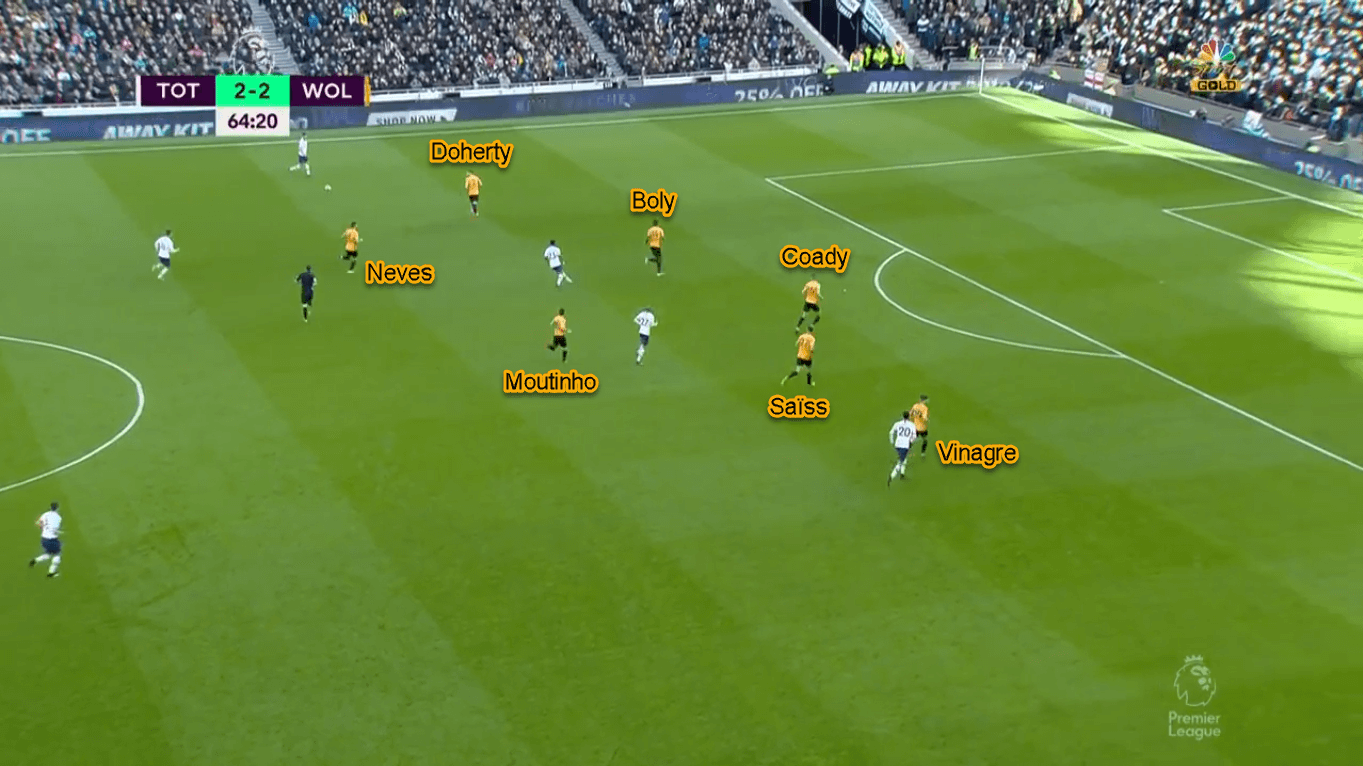
One of the reasons behind that is Nuno’s tendency to let his attackers stay forward for almost all the time, including Jota. Wolves’ forwards rarely help to defend after a failed attacking attempt, furthermore when defending deep. They would only retreat when their opponents have prolonged time in Wolves’ defensive third.
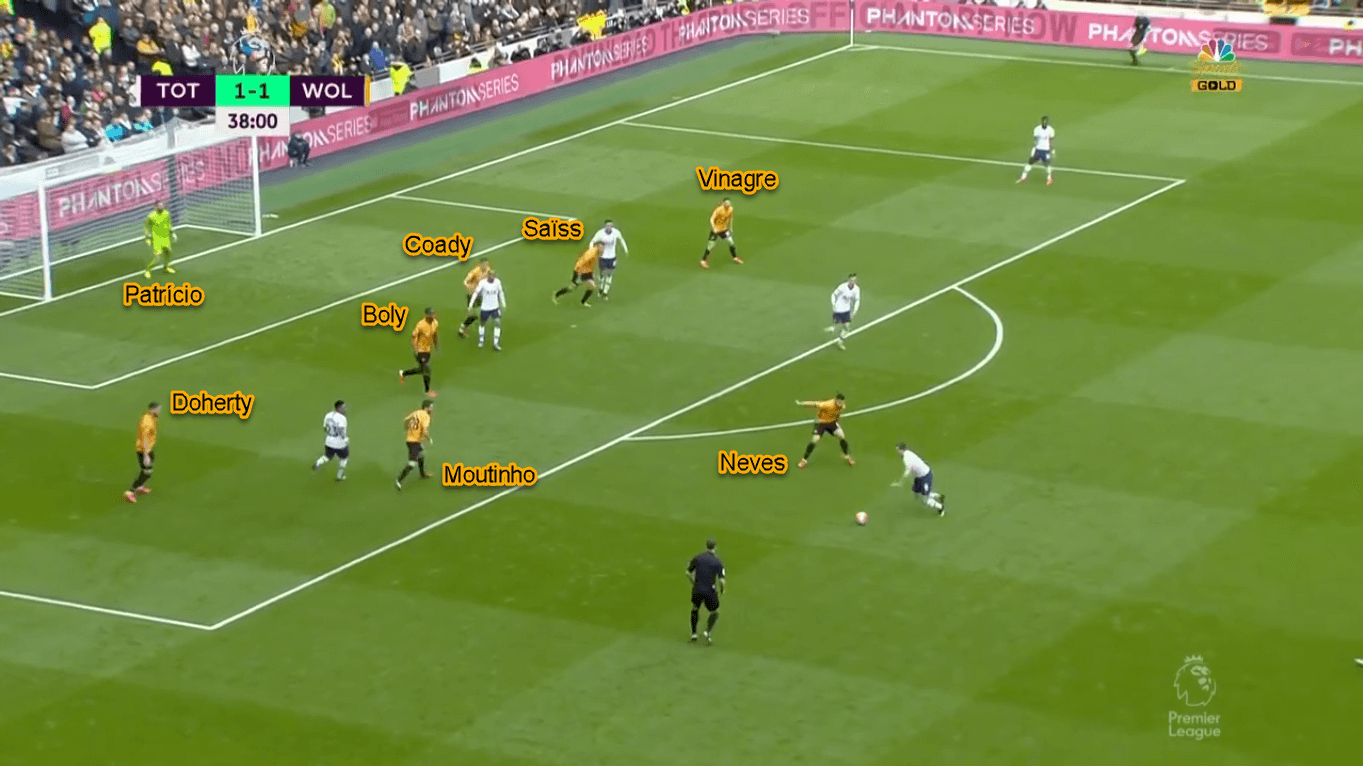
There are some ways to reach the forwards in transition. First, Wolves’ midfielders would try to win the ball near the halfway line before sending the ball to the already-advanced attackers. In this process, at least one midfielder would also join the offensive transition.
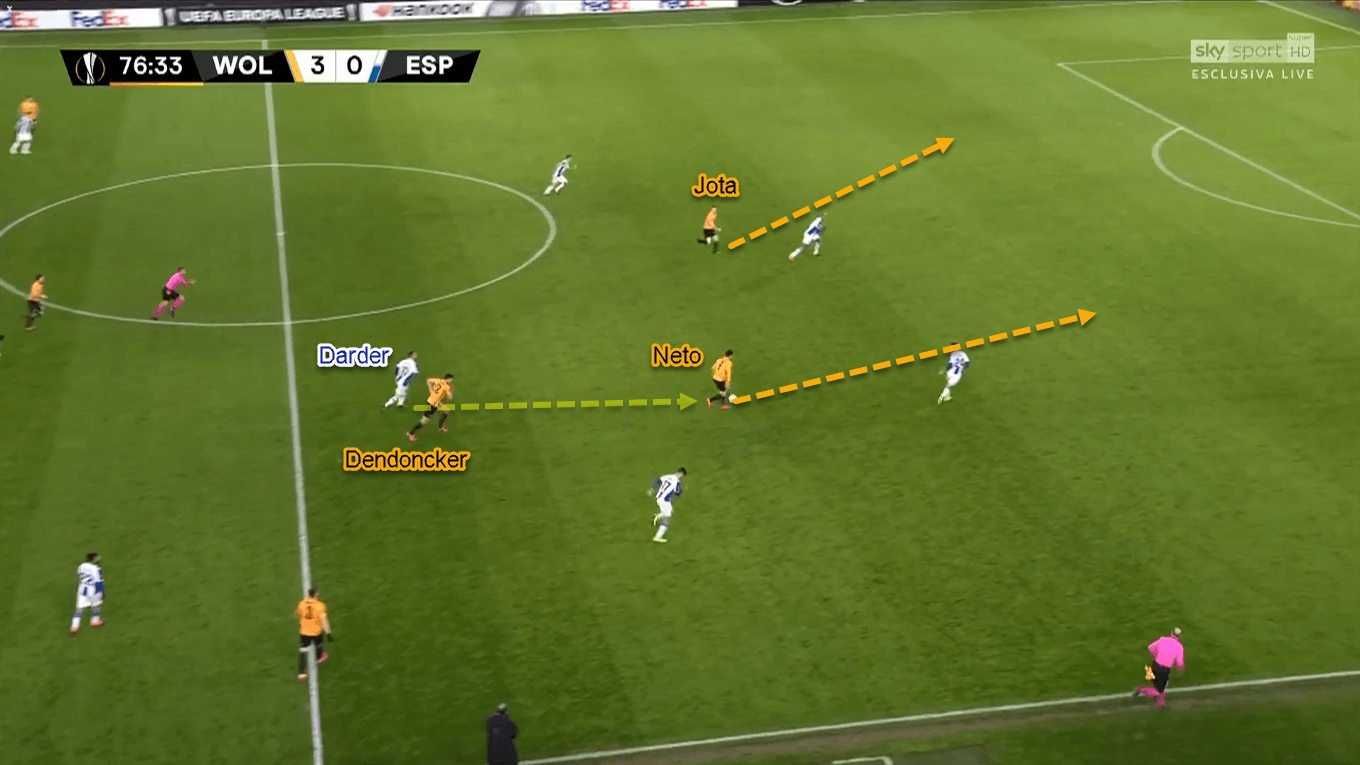
Second, by winning possession when defending deep. After that, the on-ball midfielder would try to find their attacking comrades with a long ball in behind. The forwards — either two or three — then will chase the ball to execute the transition.
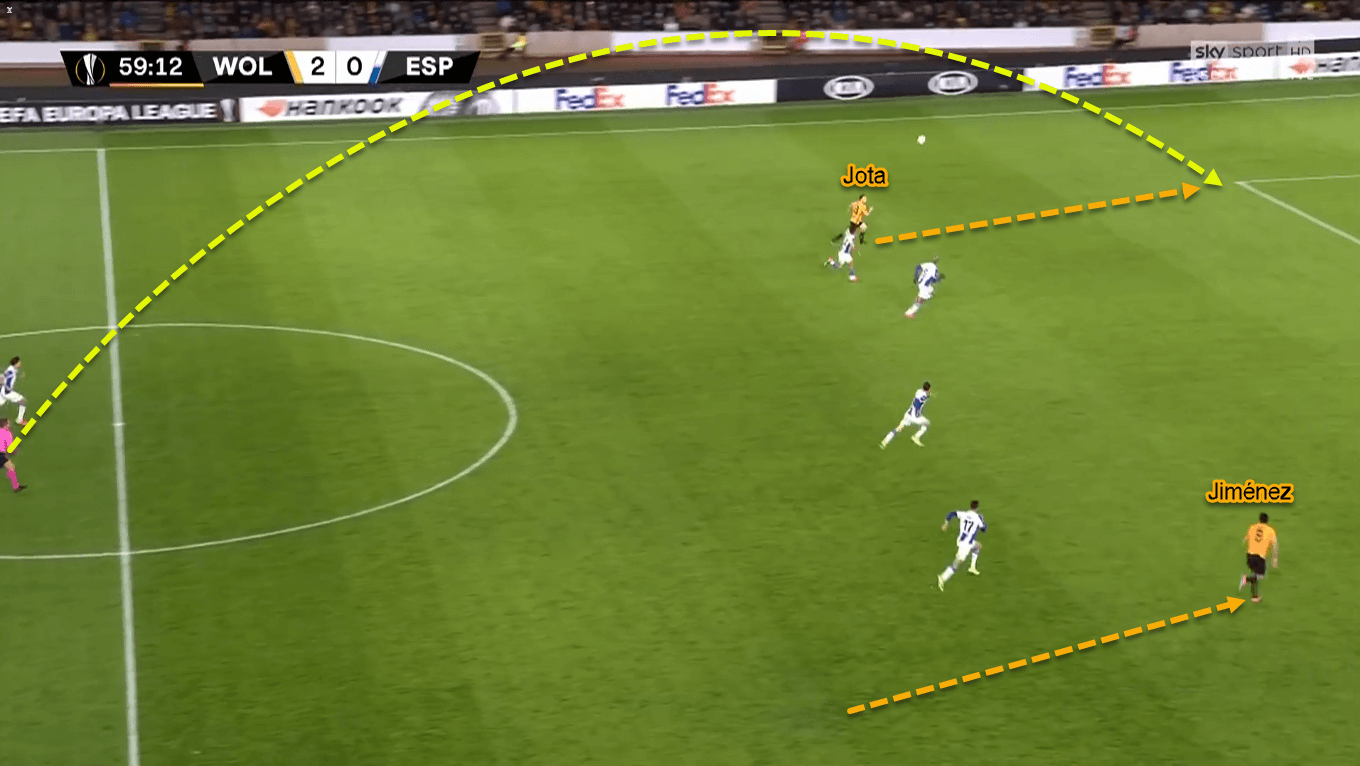
Helpful in possession
However, Wolves can also spend more time on the ball; especially when playing against relatively smaller teams. On possession, they would move to a 3–4–3 or a 3–5–2 with their wing-backs sometimes move into the final third. Jota’s main role when Wolves have the ball is to tuck inside and play in the left half-space. By doing that, he allows his wing-back partner to bomb forward and provide width.
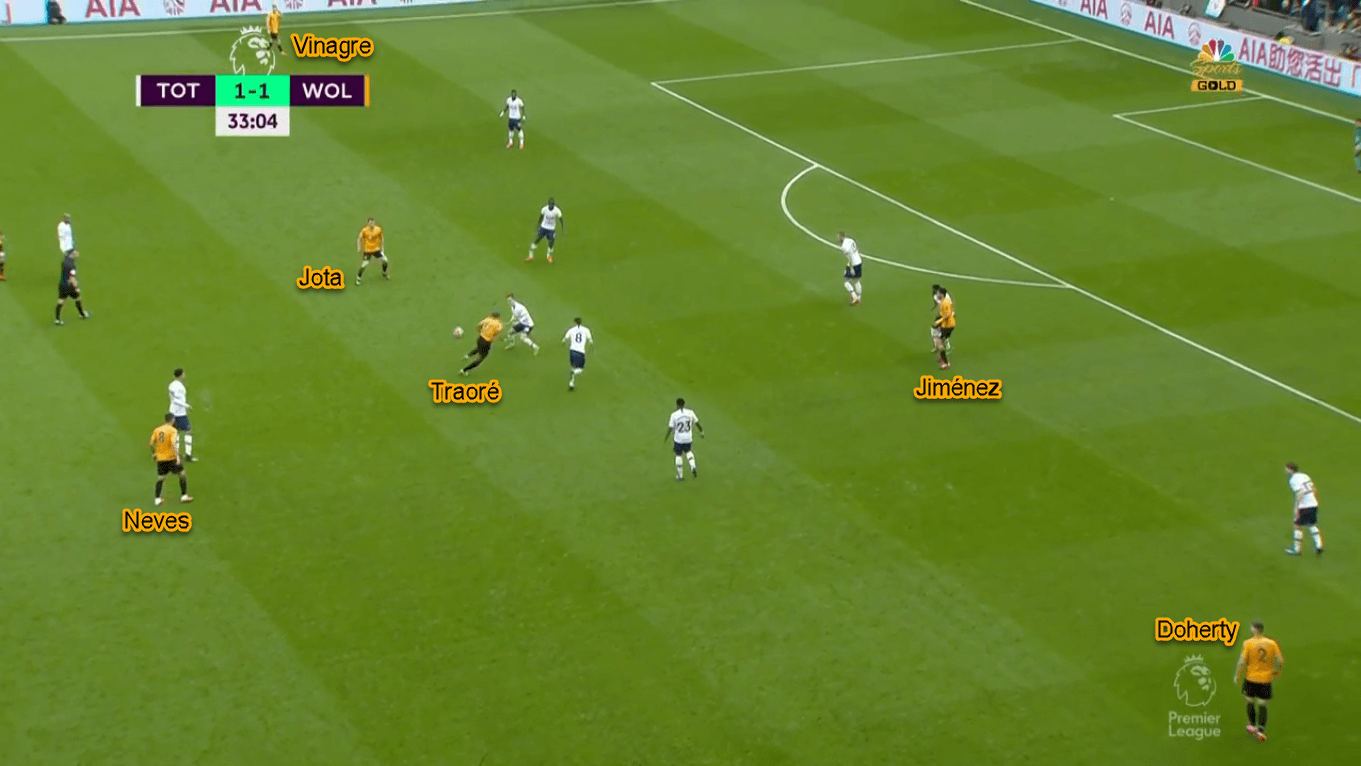
In the process, Jota tends to help his team to make a switch pass to Rúben Vinagre or Jonny Otto on the left. Not only that, but he will also serve as one of the final pass potential receivers inside the box.
Jota also likes to drop deeper to help his team in their build-ups. He would drop alongside the midfielders and receive a progressive pass from one of the defenders. Mainly, he would drop centrally or inside the left half-space. But, there are also some occasions where he drifted wide to receive such pass.
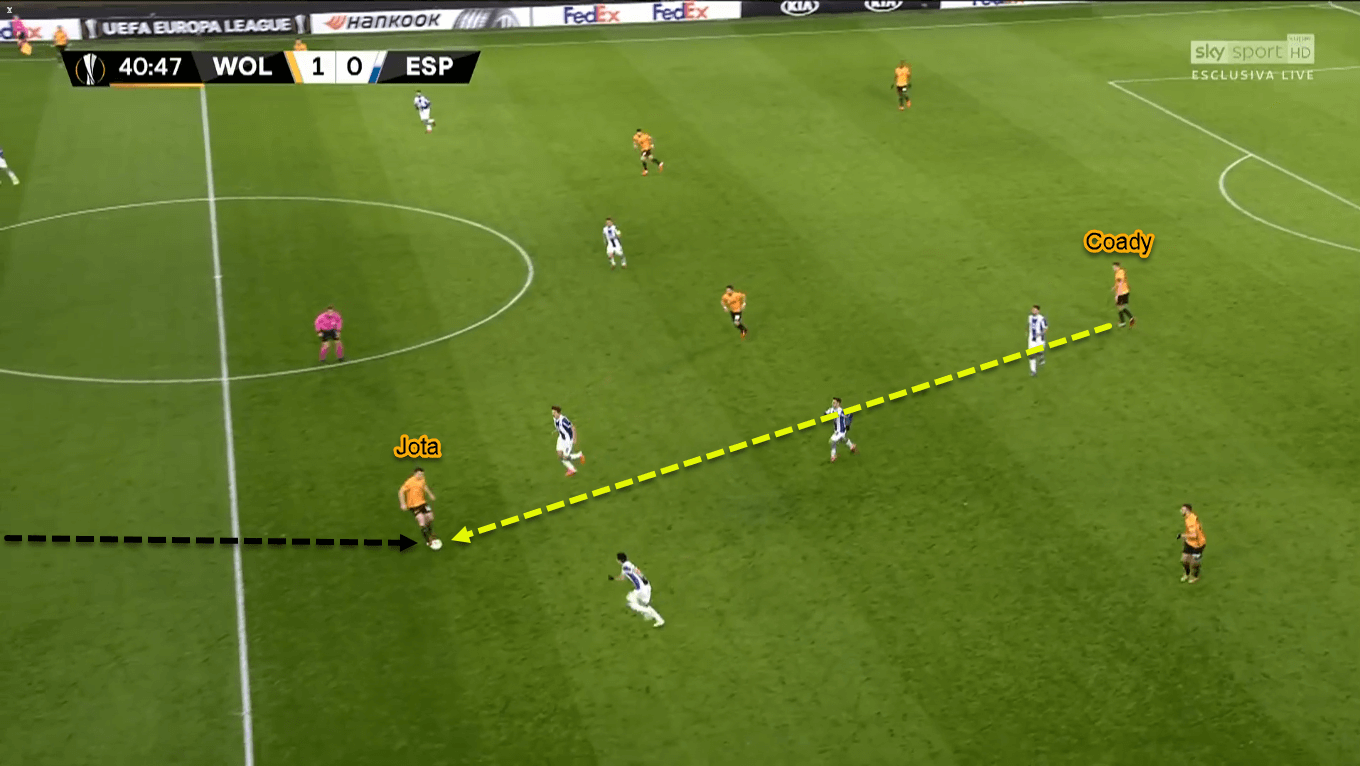
Furthermore, he would participate in the left-flank rotation whenever needed. The main objective of the rotation is to pull their opponents’ defenders out of their positions, then attack the vacated gap quickly. When doing this, Jota would attract his marker, and allow the left wing-back to attack the gap he just left. The wing-back then can be found with a short combination or a lofted through-ball from the back.
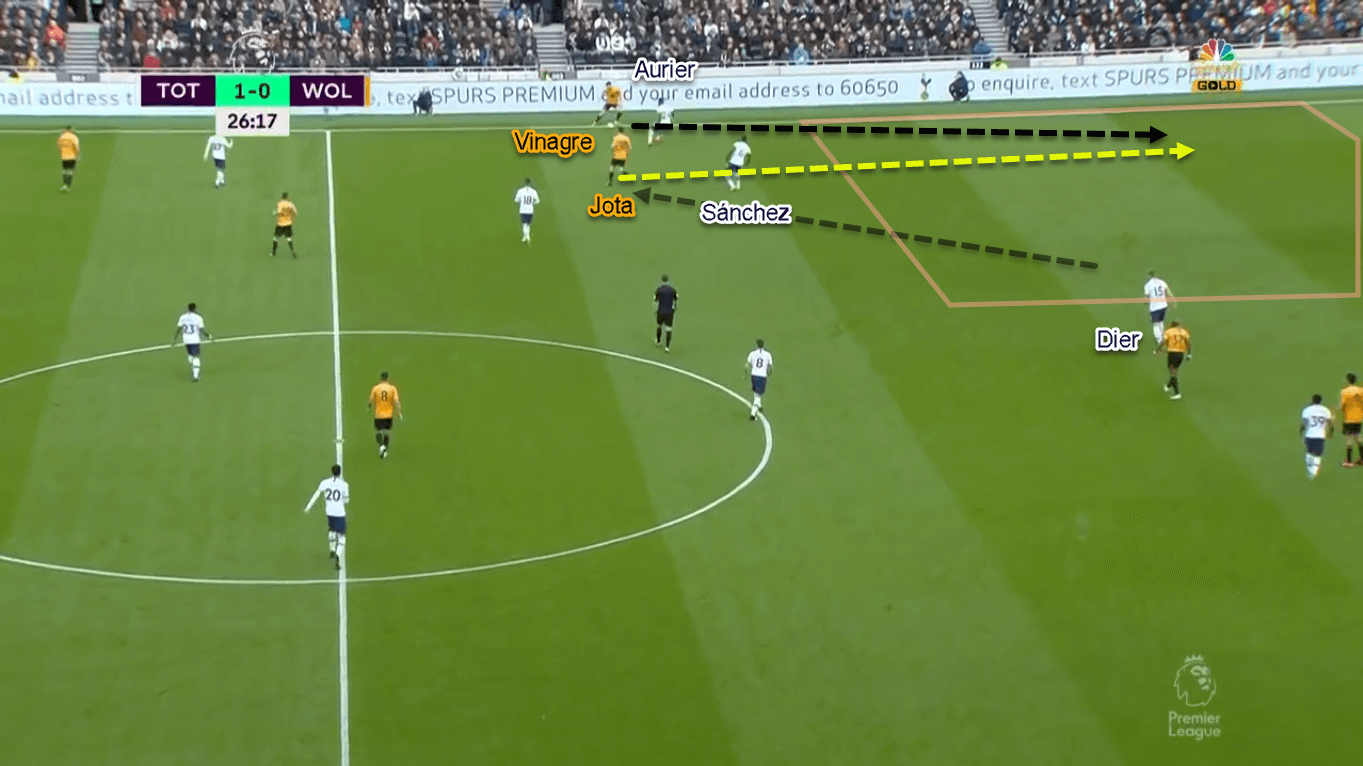
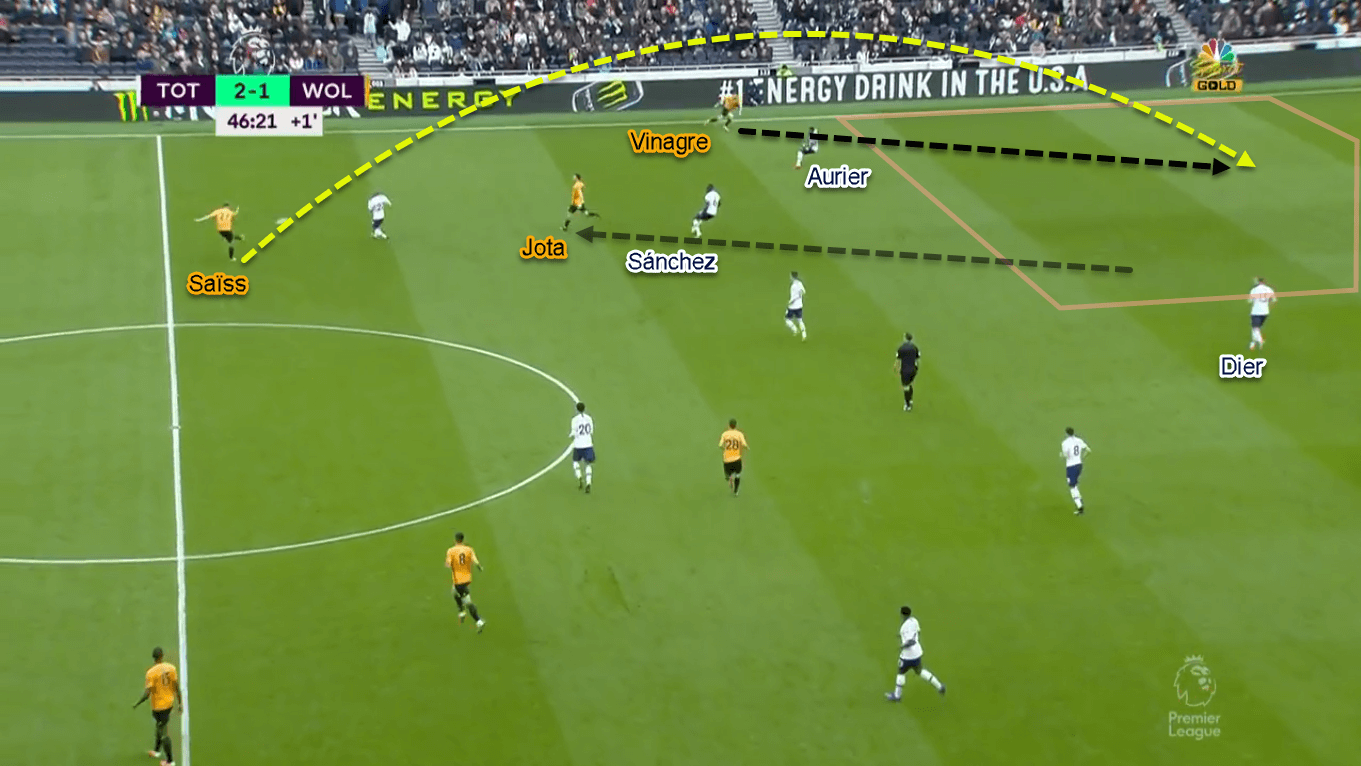
Attacking tendencies
In the final third, Jota tends to burst into the goalmouth to make tap-in finishes. He would do this by starting his run behind his marker, thus making him out of the defender’s eyesight. Even if his attacking comrades already make a similar run, Jota would rarely drop to receive a potential cut-back. Looking at the statistics, the 23-year-old has ten first-touch goals. Not only that, but six of them also came from the goalmouth area.
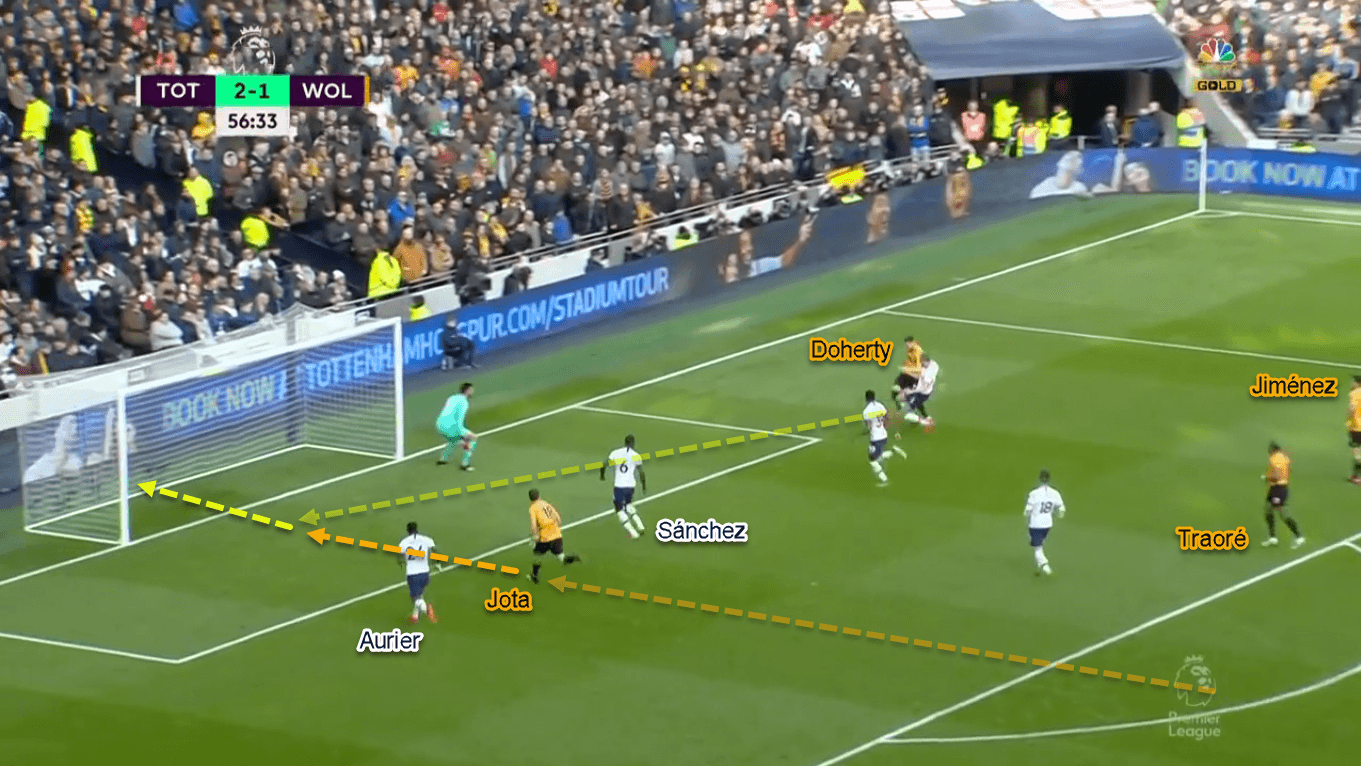
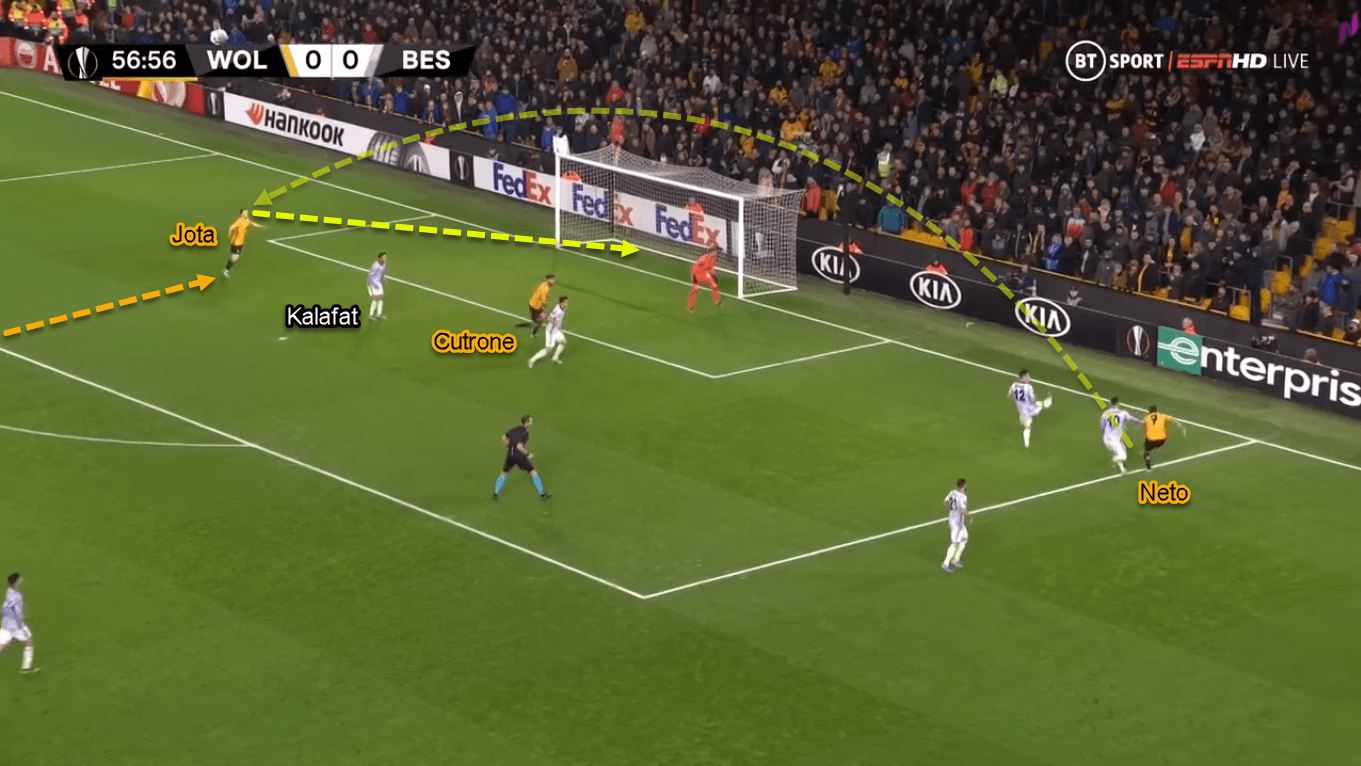
Moving to Wolves’ transition-heavy approach, Jota also has something in his armoury. Despite not being as quick as Traoré, the Portuguese have enough speed to make short bursts in behind. Not only that, his good timing when starting his run is also useful for his team.
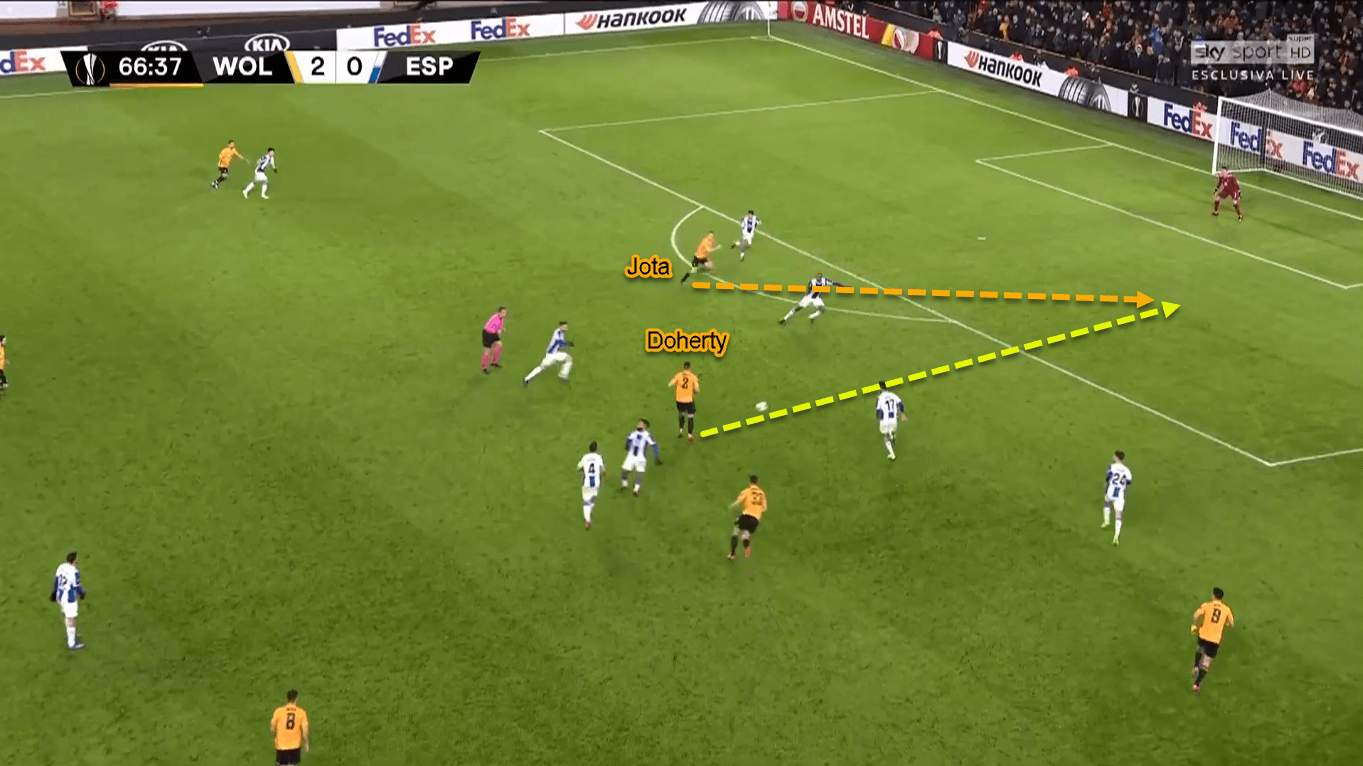
On the ball, Jota is quite quick. This particular trait is beneficial for Wolves, as Jota can initiate counter-attacks on his own. He’s able to dribble with good acceleration before entering the final third. However, he seems to know his limitations. Jota rarely dribbles past multiple defenders Traoré, nor knocking the ball forward to engage in a footrace. Instead, he would try to find one of his teammates in the final third to continue the transition.
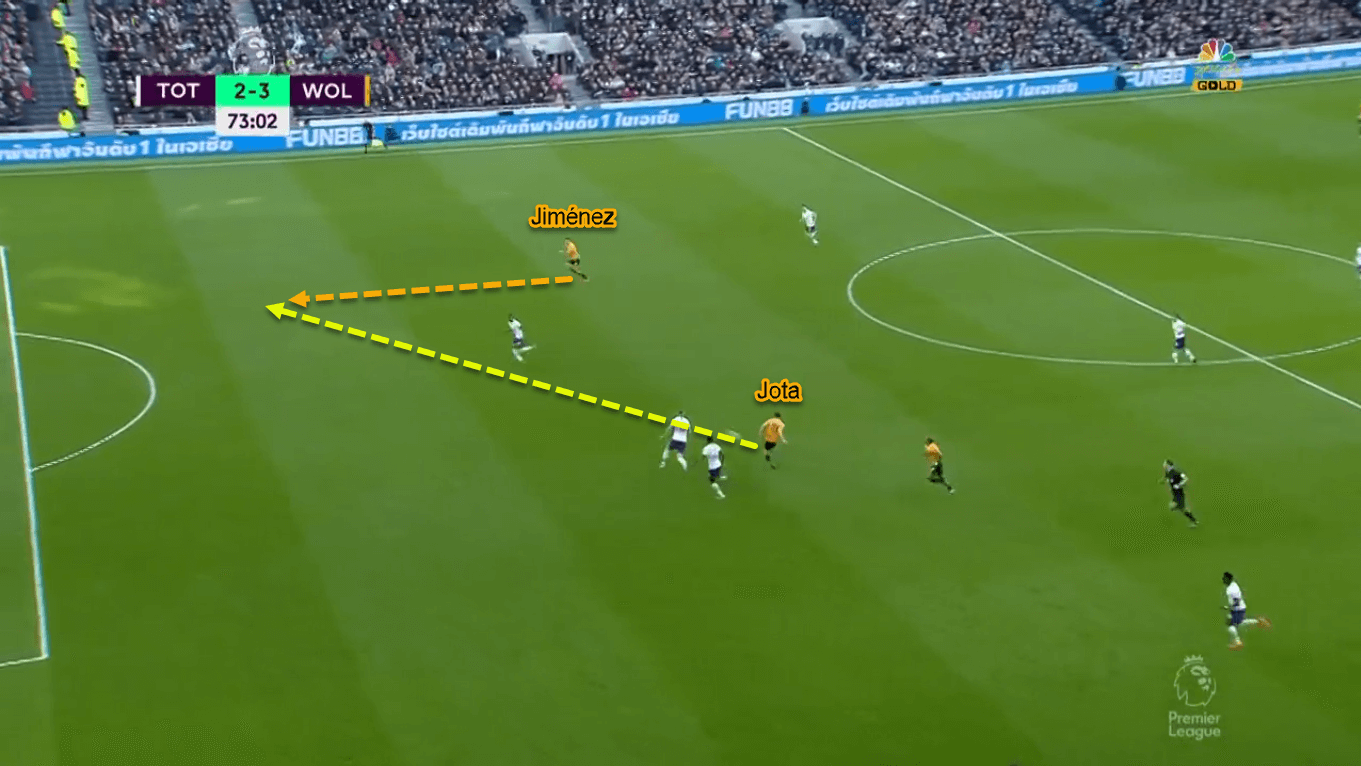
A specific role in Wolves’ corner-kicks
If we look at the stats, Wolves currently have ten set-piece goals under their belt. That tally is the joint-fourth highest in the Premier League. Even though only standing at 178 centimetres, that doesn’t mean Jota is a liability for Wolves’ set-pieces. Instead, he has a specific task in their corner-kicks. For a fact, Jota has already netted twice from such a situation in all competitions.
When attacking in a corner-kick, Nuno would allow up to five of his men inside the penalty box. Specifically, Jota is mainly instructed to stay in front of the opponents’ goalkeeper; inside the six-yard area. Behind them, his taller teammates tend to make a ‘love-train’ shape to disrupt the opponents’ man-marking or hybrid scheme.
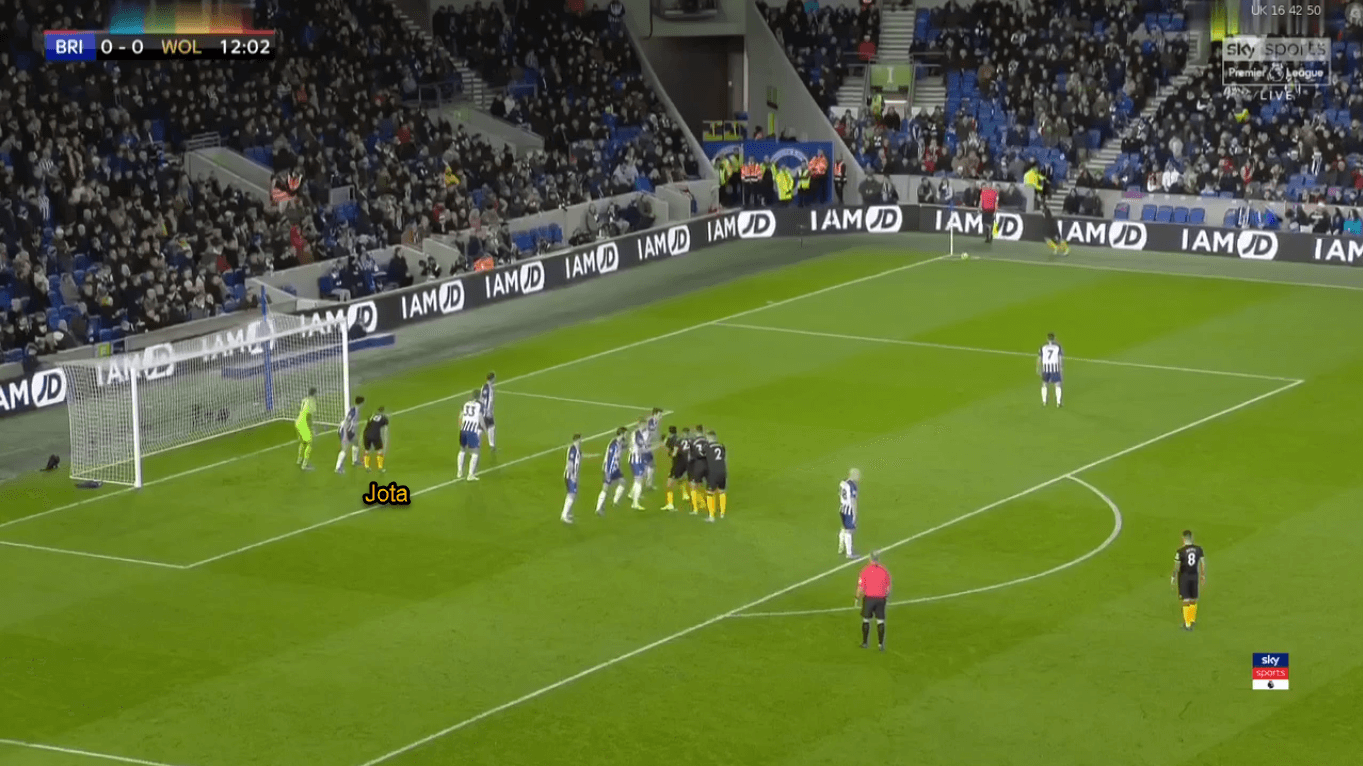
Of course, the corner-kick would not be targeted to Jota. Instead, the ball will be sent to one of his teammates; either to the near post or to the penalty spot area. By positioned in that area, Jota can force the goalie to stay at his spot rather than coming out to save the ball. It doesn’t stop there. With his good anticipation and tendency to make a goalmouth run, the Portuguese can win the second balls from his teammate.
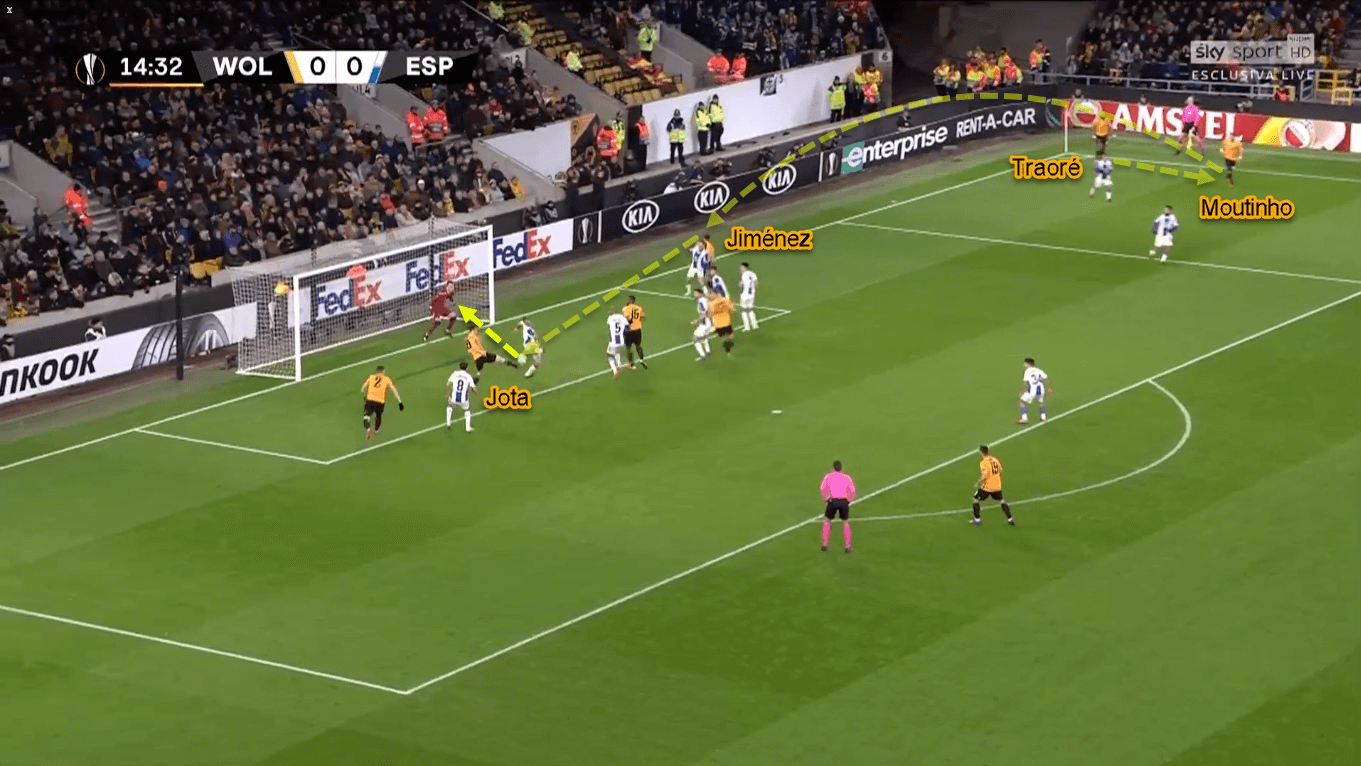
Good on-ball ability
Another facet in Jota’s game is his sublime first touch and ball control. In the final third, this particular trait helps him to be more dangerous offensively. Jota would use this when he needs to get free from his closing-down marker. His brilliant first touch would help him to get a one-yard gap before making a shot. This is another reason why Jota only needs a few touches before slotting the ball home.
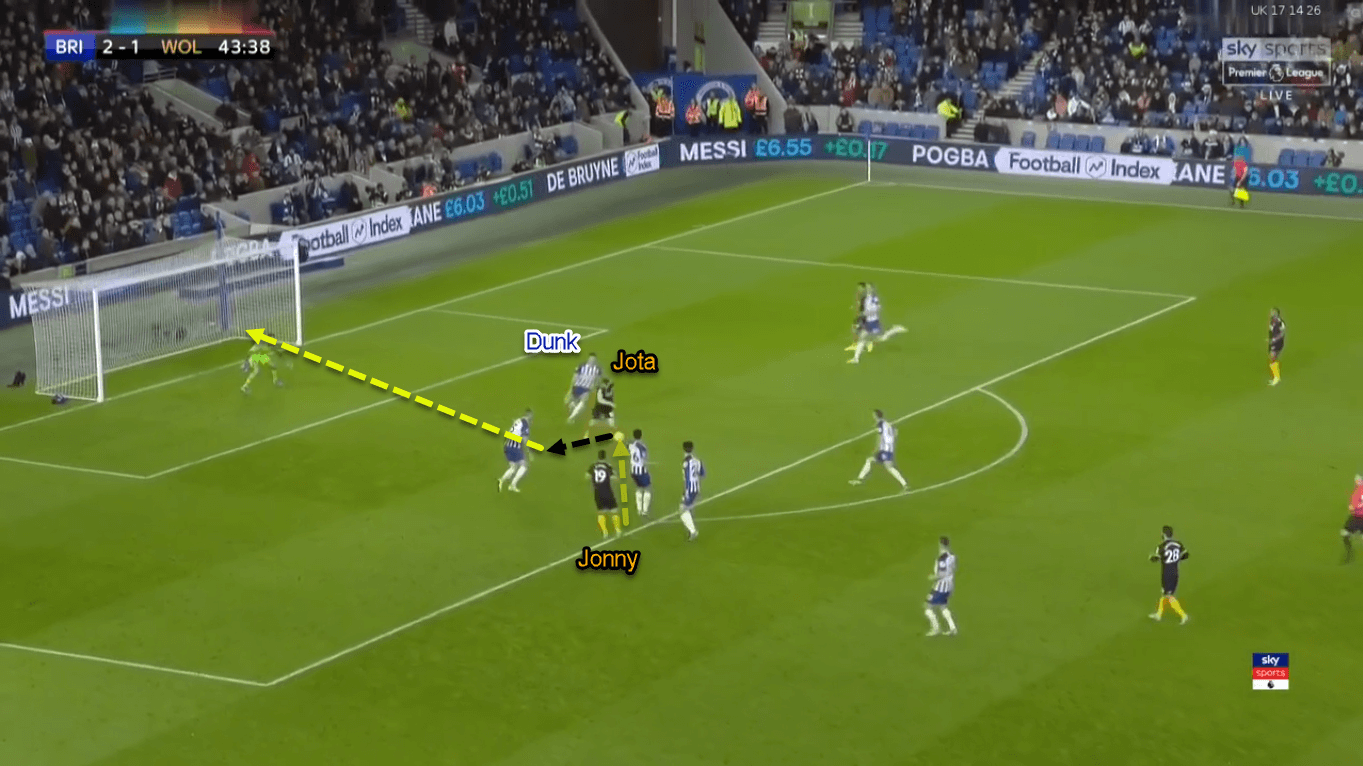
In deeper areas, Jota’s first touch is useful to continue the possession. He would calmly control the ball and protects it, even from bigger opponents. Jota can also be considered as a needle player. That means he’s very composed in tight spaces even when getting pressed by multiple defenders.
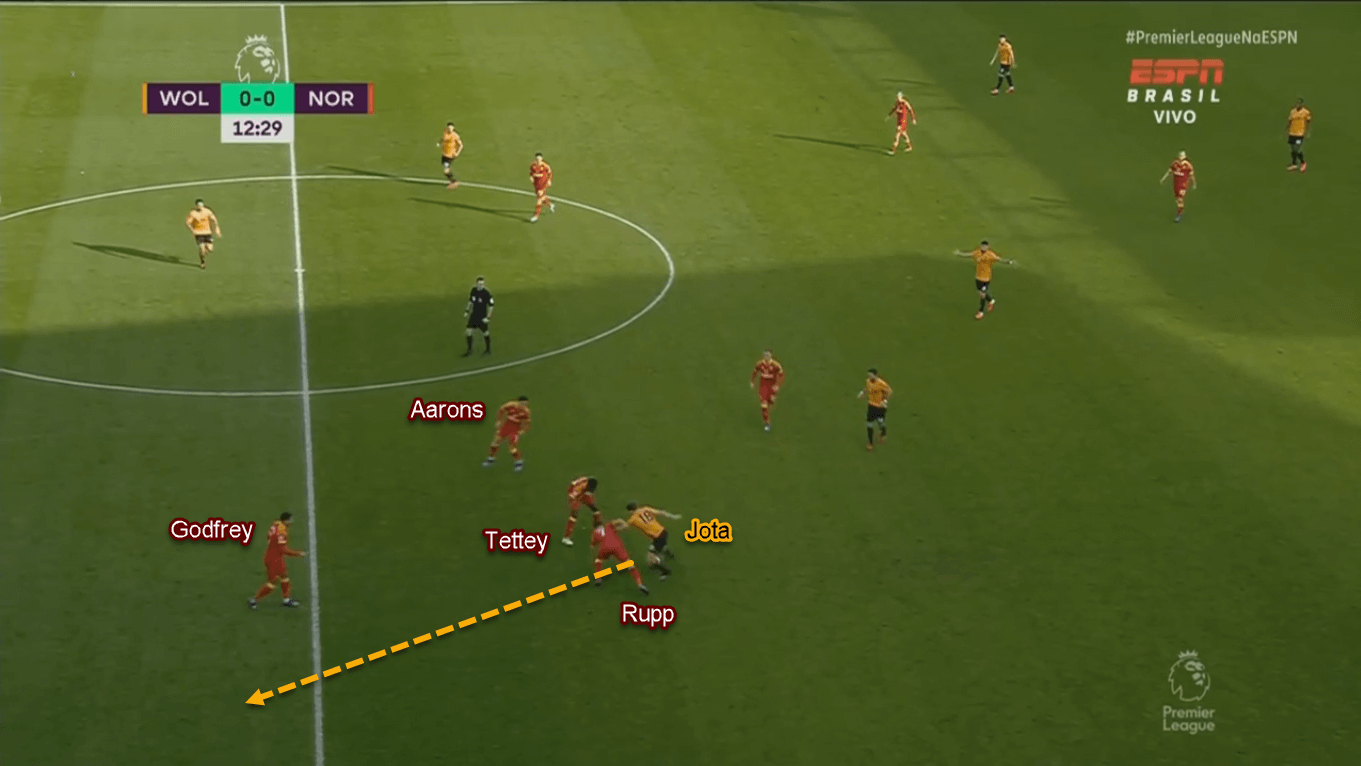
Not only that, but the Portuguese also has a good dribbling skill in his arsenal. Up until today, Jota has averaged 2.8 successful dribbles per 90 minutes in the league. This is the third-highest among all Nuno’s men this season.
Defensive roles
Nuno tends to ask his team to regroup when they lose the ball. Either to a mid-block 5–2–3, 5–3–2, or 5–4–1, Wolves prefer to retreat, sit back, and defend with numbers. In their mid-block defence, Jota will only press the on-ball opponent when the ball goes wide. In such a situation, the forward will also be supported by his teammates on that side, particularly to overload the area. The objective is to limit the on-ball opponent’s time space and time in possession. Furthermore, they would also try to provoke him making a mistake.
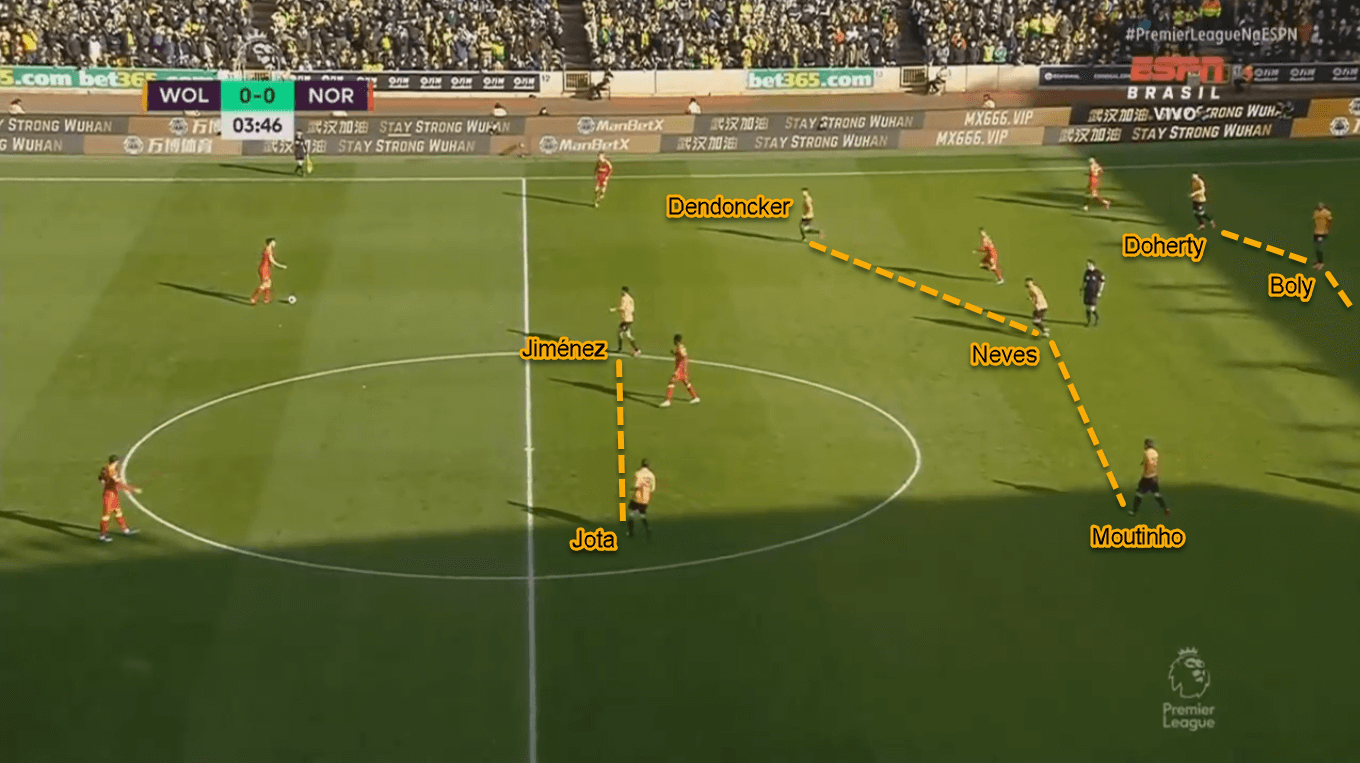
In that overload, Jota could come in and prevent an inside pass for the on-ball opponent. Not only that, but he can also prevent the opponent to make a safe backwards pass to the centre-back.
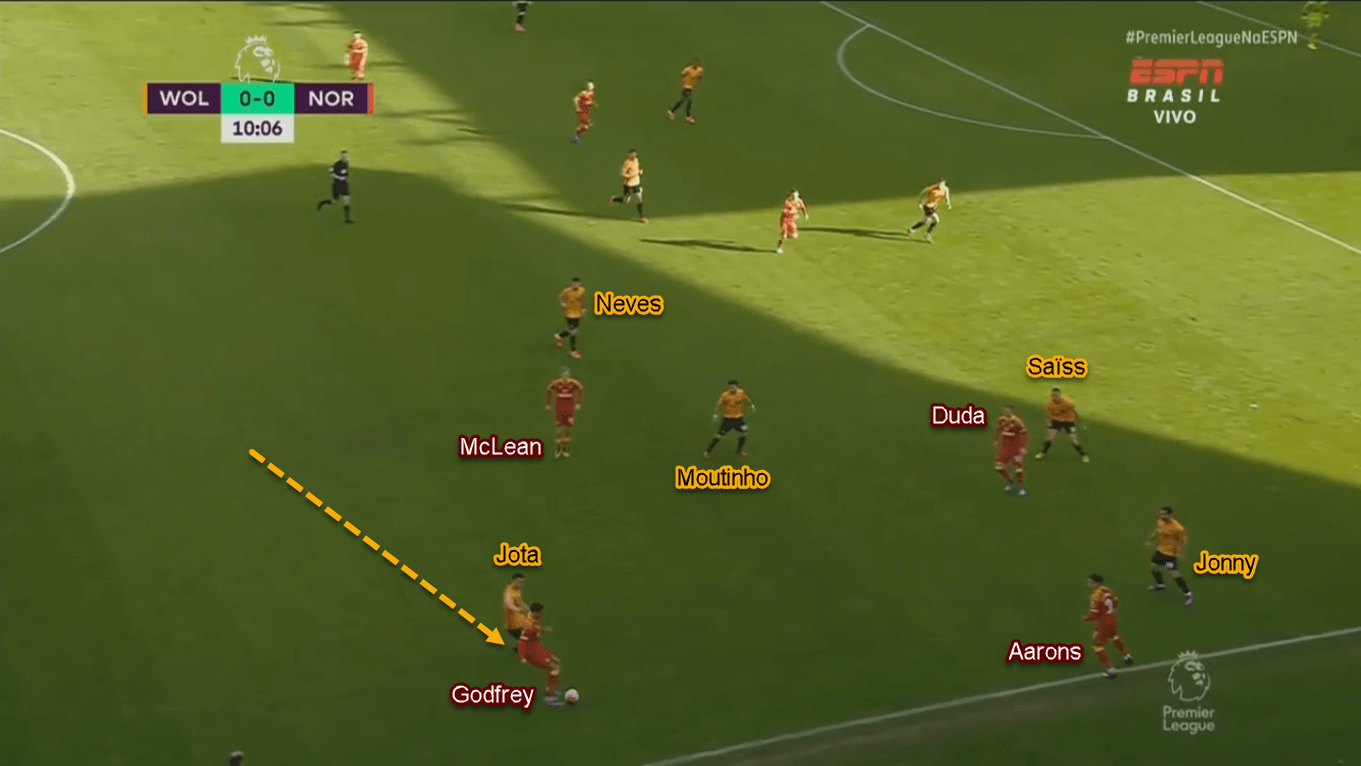
Even with their tendency to retreat and sit deeper, Wolves would also press higher at times. They would do this particularly when their rivals are not so good when building from the back. Nuno’s main instruction for Jota is to press the centre-back in his area, with his teammates closing down any nearby passing options.
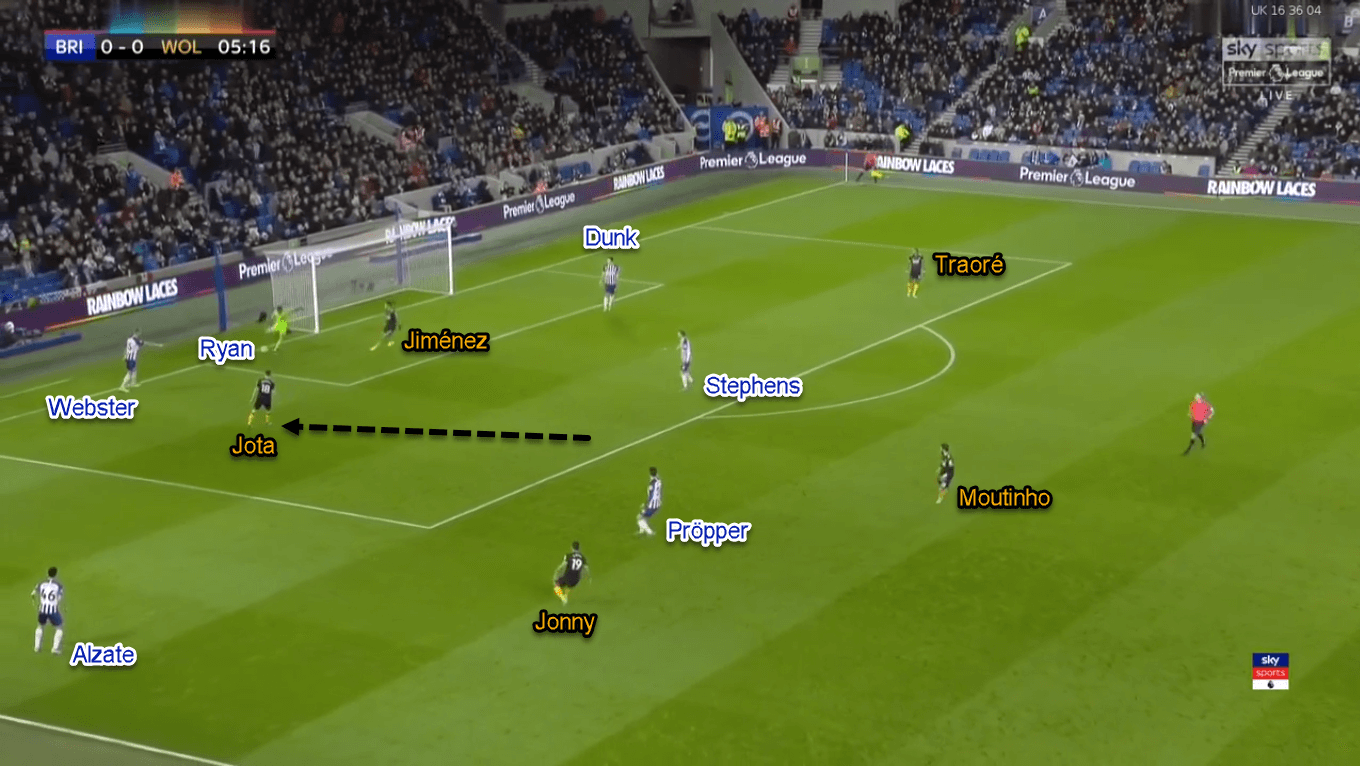
Then, Jota would press him and try to force him to go wide. By doing so, he would limit the defender’s time and space on the ball and prevents a backpass to the goalkeeper. Even better, to steal the ball back from the on-ball defender in the advanced area.
Potential issues
Previously this scout report has mentioned Jota’s not-so-exceptional pace. Indeed, he has good acceleration and some speed to make runs in behind. However, they’re not enough especially when Jota has to engage in a footrace in space. Wolves’ direct approach in transitions makes this particular weakness quite visible whenever Jota chases a long pass in behind.
Not only that, but Jota also has another weakness physically. Weighed at only 70 kilograms, Jota is not the strongest player in Wolves’ squad. Again, he has acceptable strength and good first-touch to protect the ball. However, the Portuguese’ lack of strength could be exploited in more physical duels. The opponents can take advantage from Jota in aerial duels or by legally charging him down in a footrace.
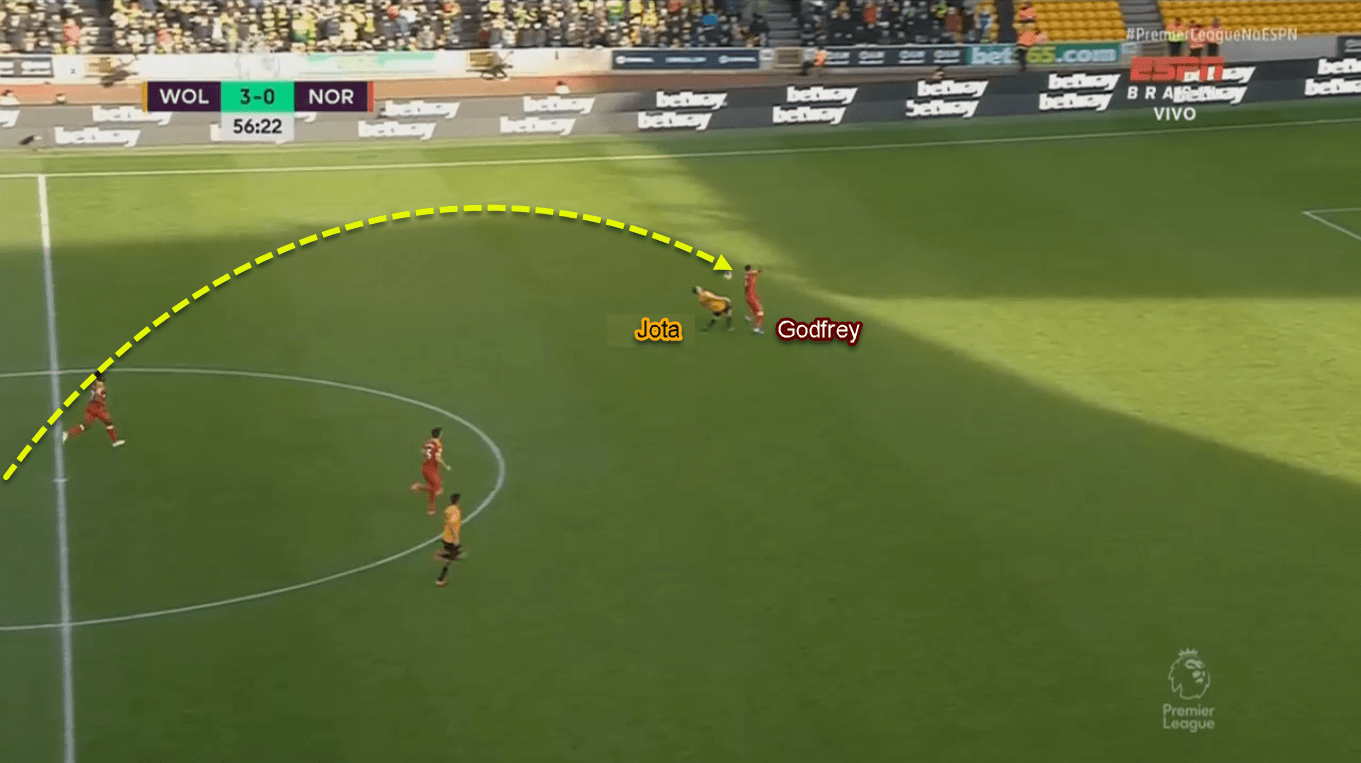
Conclusion
The notion of ‘fox in the box’ may suits Jota quite well. However, he’s more than just that. Jota is a very smart and versatile attacker who can do a lot of things offensively. From casually dropping deep, gracefully controls the ball, calmly gets past defenders, and of course, aggressively finishes at the goalmouth, Jota can do basically everything.
Some top Premier League teams have been lurking for his availability for moths. Not only them, but Atlético Madrid are also rumoured to bring him back to the Iberian peninsula. Will he make the big move next season? Let’s just wait and see.




Comments